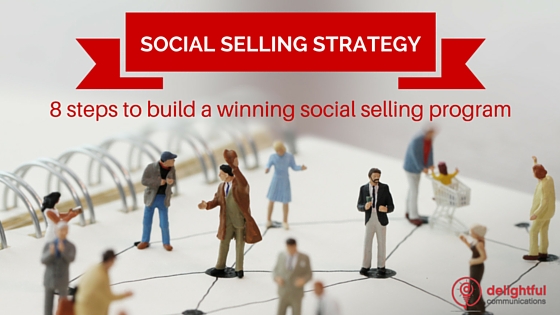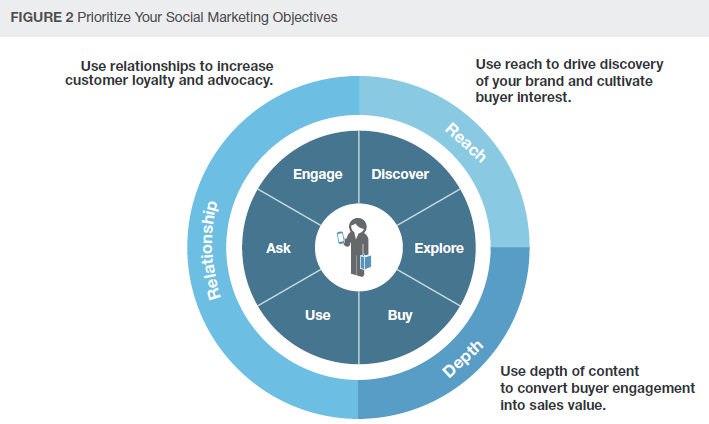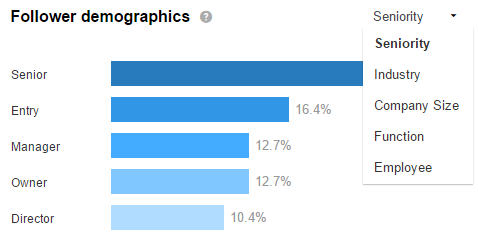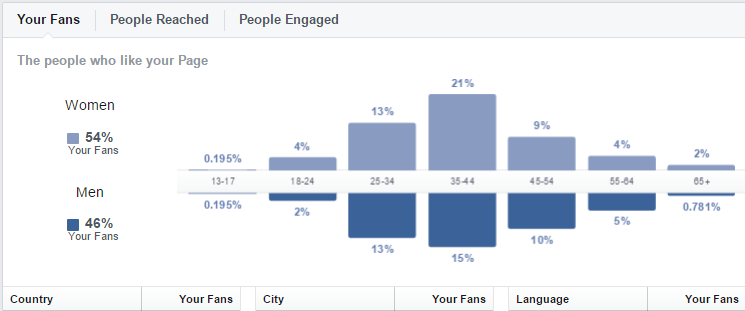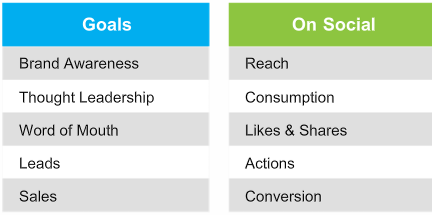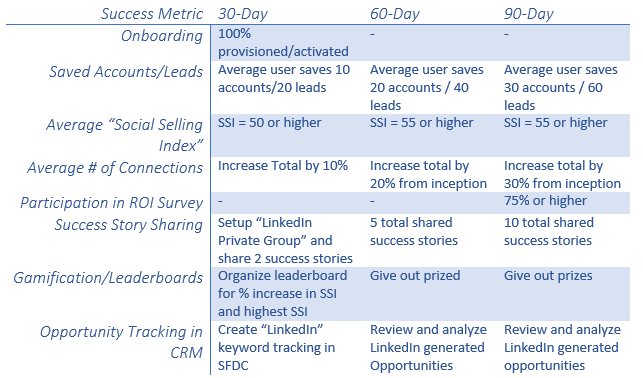Social selling is definitely a vibrant buzzword in the 2015 business world. Businesses, large and small, are trying to jump on the social selling bandwagon in fear of missing out.
Social selling is not just about helping your sales reps set up their social profiles and start pitching people on social media. It requires a comprehensive plan and deliberate strategies and tactics to deliver successful results.
A recent study from Forrester shows that a large number of sales and marketing professionals don’t know how to get started with a formal social selling program.
Let’s suppose you’ve recognized the value of social selling, persuaded your stakeholders it’s a great idea, and are ready to get started with a solid plan, here are 8 steps to help you build a winning social selling program:
- Define your goal
It’s obvious that the ultimate goal for any social selling programs would be generating more sales. However, for a winning social selling program, the goal needs to be more specific and scalable.
The Forrester study recommends marketers to think about customers’ purchase circle and functions of social media when setting the goals for a social selling program:
Are you trying to use social media as a monitoring and listening vehicle to better help sales reps generate high-quality leads? Do you want to attract more new customers by reaching new audiences via social media? Or are you aiming to improve brand loyalty and maintain relationships with existing customers by raising brand awareness?
Answering questions like these will help you figure out which level of the sales funnel can be enhanced by social selling and maximizes the benefit of the program.
- Know your customer
Social selling is about delivering the right message to the right people in the right way. Knowing what social media platforms your customers are using and how they are using them are crucial for the success of your social selling practices.
Although Facebook remains to be the mostly used social media platform in the U.S., it doesn’t mean your target audience will be there too. Are your business B2B or B2C? What industry are you in? Where is your major audience located? These are all the questions you need to answer before selecting the platforms you will mainly focus on for social selling.
Understanding the audience who are already interested in your brand or product will help you to further drive them down in the sales funnel. Most of the major social media platforms now have free analytical tools that provide you with valuable demographic information about your followers.
For example, LinkedIn analytics for company pages can tell you what industry your followers are from, how big their companies are, what level they are at, etc. With Twitter Analytics, you are able to know the top interest, location, and gender information of your followers. Facebook page insight provides similar information including your fans’ gender, age, and location. Moreover, third party tools such as SimplyMeasured and FollowerWonk provide free tools to analyze how your followers are using social media platforms such as who are the top followers and when are they active online.
- Decide who owns the program
As Reid Robinson from HootSuite mentioned in a recent webinar, social media force, one of the biggest misperceptions about social selling is that it should only be led by sales. Although it’s a “sales” program and sales reps will be the key driver of the program progress, it doesn’t mean the sales team can work alone effectively and efficiently.
Social media platforms are the battlefields of marketers. It’s unreasonable to leave them out and not utilize their expertise on social media to help your sales reps achieve better goals.
Think about how important marketing teams can be for a social selling program:
- They train the sales team to facilitate sales reps’ use of social media platforms
- They provide content that enable sales reps to reach out and engage with customers
- They monitor social media to provide insightful information for sales reps
- They make recommendations on the tools that optimize the program
- They measure the success of the program
Besides sales and marketing teams, a successful social selling program also needs the support from other departments such as training and analytics teams. No matter who you decide to own the program, a winning social selling program requires collaboration, cooperation and contributions from different teams to deliver a worthy result.
- Integration with other strategies
Social selling should not be a stand-alone program. Instead of treating it as the cure-all for aggressive sales goals to replace the existing sales approach, social selling should enhance current sales activities by leveraging social media.
The survey by Forrester shows that a strong content strategy is core to a successful social selling program. If you are already creating great content that resonates with your social audience, repurposing it for your social selling program is an efficient way to boost the progress. Also, yoursocial selling program can be a great resource for your next content marketing campaign by providing customer feedback and successful sales stories.
Similarly, a social selling program can be a great add-on to your social media activities. Utilize the company social media channels and encourage the sales reps to engage with the company accounts to create a halo effect for both brand and sales messages.
- Set up process and guidelines
A well-planned process and guidelines will make social selling practices repeatable and minimize program risk. Also, teams are more likely to be convinced to adopt a social selling program if it’s easy to implement and won’t distract the sales reps too much from the existing work flow.
There’s no one-size-fits-all process for social selling programs. The right process for your team should be customized based on the goals of the program, your target audience, your team setup, the resource and support you have, and so on.
A set of guidelines makes sure the social selling program doesn’t conflict with existing strategies and tactics and help sales reps to understand the program in a more straightforward way.
However, processes and guidelines that are too restrictive might hurt the performance of the program. Social selling is all about relationship building. It works best when sales reps come off as human. Processes and guidelines that are too strict may limit sales reps’ chances to show their personality and stop them from being creative.
Instead, the right processes and guidelines should help the sales reps to find the balance between being sale-sy and being themselves.
- Educate your team
Training is required for a winning social selling program. Even if your sales reps are all millennials and they are supposed to be the social media natives, the fact that they are familiar with social platforms doesn’t necessarily mean they know how to use it for sales.
Obviously, not all sales teams comprise of millennials only. Before designing the training material, you should test and understand what capabilities your sales reps have for the social media platforms you plan to focus on.
Moreover, instead of organizing a couple of workshops only, training should be an ongoing process and ensure the sales reps get the answers in real-time when they have questions during their social selling activities. Also, frequent check-ins are necessary in order to ensure the sales reps are on the right path to success.
- Set up measurement and metrics
In order to understand the progress of your social selling program and further optimize it, you need to find the right metrics to measure the program’s success. Reid Robinson showed us some examples of how social metrics can be aligned with program goals during the webinar:
LinkedIn also shared their insights on how they recommend businesses to measure success of social selling program on LinkedIn:
Although measurement is a must, the Forrester report reminds businesses not to rush it. Introducing the measurement metrics too early may put too much pressure on the sales team. Measurement should start after the program is fully set up and the metrics should be revisited while the program develops and matures.
- Utilize Social Selling technologies
There are more and more technologies emerging that can be used for managing and measuring social selling programs. For example LinkedIn Sales Navigator, a sales tool launched by LinkedIn recently, is designed for supporting social selling programs by helping sales reps looking for prospects, getting insights, building relationships, and measuring their success.
According to the there are third party platforms such as rFactr and PeopleLinx with full functionalities for social selling programs. Also, other tools for social media and content marketing such as HootSuite and Opal can be a great add-on to help coordinate the activities among different teams for the program.
We would love to hear more about your stories on social selling. Please comment below if you have any ideas to share with us.
Delightful Communications provides consulting and training services on social selling. Learn more about all our digital marketing services here.
And don’t forget to:
Subscribe to The Delightful Times
Like the Delightful Facebook Page
Thanks for reading!
@BiancaHu – Digital Marketing Specialist

